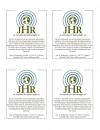Wednesday, July 2, 2008
The World Around Us: Colombia
"Injustice for the Indigenous"
Nick Wong
Colombia's history of drug trafficking, extortion, and brutal assassinations have significantly diminished, but have not completely disappeared. A strong public sentiment exists that the current president, Alvaro Uribe, attempts to paint a picture that the civil war has long passed, but political kidnappings still occur and journalists continued to be murdered for reporting too close to the situation. While the combat has drastically calmed, (to the point where I can travel the country relatively safely), the after-effects of this tragic history remain prevalent.
Like most civil conflicts, the marginalized demographic suffers the most, which in Colombia's case means the indigenous and Afro-Colombians. According to codhes.org, Colombia is the world's leading country of displaced people with the majority being disproportionately Afro-Colombian. Many are moved from their war-torn home towns to bigger cities, like the country's capital, Bogotà.
Colombia's cities are divided into "stratas", ranging from 1 to 6; the ranking indicating accordingly the area's local income, availability of public services and so on. Not surprisingly, most politically displaced people are relocated in "strata 1 or strata 2" areas, often time the least government supported and also the most dangerous parts of the city. And as if things weren't difficult enough, adequate employment is hard to come by in a city as populated as Bogotà (estimated population 9 million).
Whether fabricated by media or true in reality, the former injustices that define Colombia's reputation have since lessened considerably, but a new form of human rights issues spawn from the past. While perhaps not as viciously obvious, it is still equally problematic at its core.
Nick Wong
Colombia's history of drug trafficking, extortion, and brutal assassinations have significantly diminished, but have not completely disappeared. A strong public sentiment exists that the current president, Alvaro Uribe, attempts to paint a picture that the civil war has long passed, but political kidnappings still occur and journalists continued to be murdered for reporting too close to the situation. While the combat has drastically calmed, (to the point where I can travel the country relatively safely), the after-effects of this tragic history remain prevalent.
Like most civil conflicts, the marginalized demographic suffers the most, which in Colombia's case means the indigenous and Afro-Colombians. According to codhes.org, Colombia is the world's leading country of displaced people with the majority being disproportionately Afro-Colombian. Many are moved from their war-torn home towns to bigger cities, like the country's capital, Bogotà.
Colombia's cities are divided into "stratas", ranging from 1 to 6; the ranking indicating accordingly the area's local income, availability of public services and so on. Not surprisingly, most politically displaced people are relocated in "strata 1 or strata 2" areas, often time the least government supported and also the most dangerous parts of the city. And as if things weren't difficult enough, adequate employment is hard to come by in a city as populated as Bogotà (estimated population 9 million).
Whether fabricated by media or true in reality, the former injustices that define Colombia's reputation have since lessened considerably, but a new form of human rights issues spawn from the past. While perhaps not as viciously obvious, it is still equally problematic at its core.
Posted by
UWJHR
at
9:33 AM
|
0
comments
Labels: afro-colombians, alvaro uribe, colombia, indigenous, nick wong, university of washington, uwjhr
Labels: afro-colombians, alvaro uribe, colombia, indigenous, nick wong, university of washington, uwjhr


